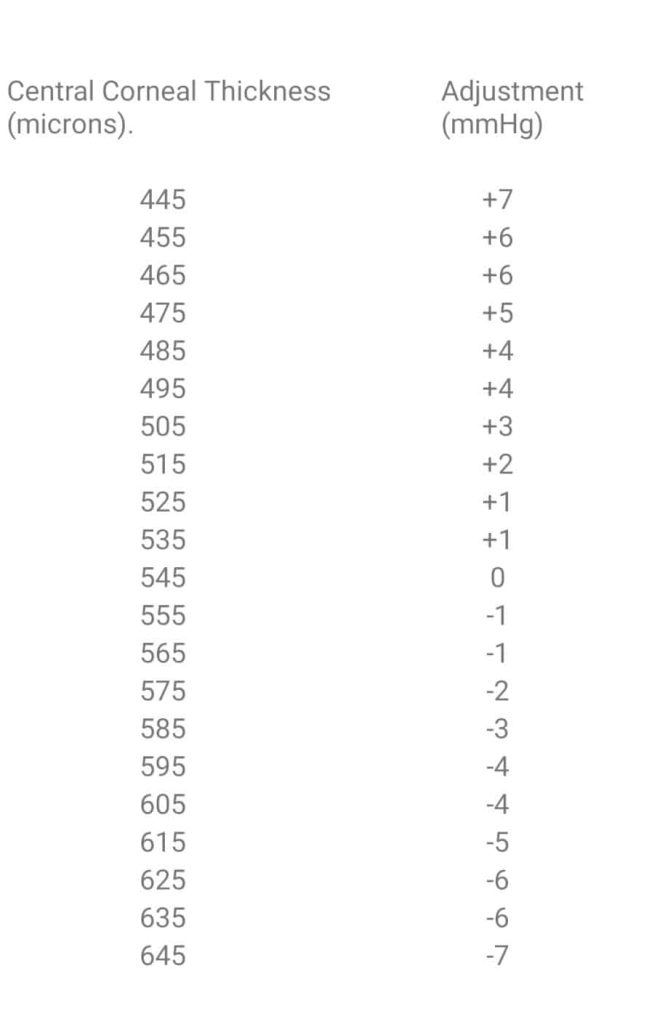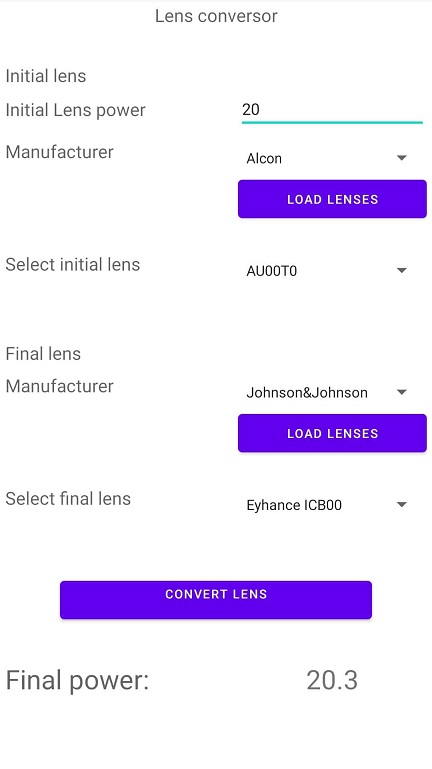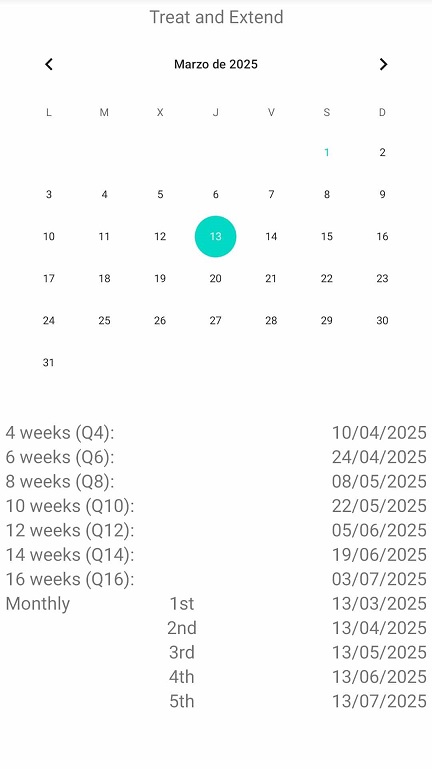CataracTools
Contents [hide]
CataracTools is an android app focused on helping eye doctors in their daily routine and become one of the basic tools for cataract surgery. Not available in Google play due to Google’s invasive policy.
Many options have been included in the app and most are very self-explanatory: a table of lens constants, Vogt-Koyanagi-Harada score calculator, macular hole stating, retinopathy of prematurity staging, uveitis SUN scale… But below these lines you’ll find the options that need further explanation and are the core of the app.
Sulcus lens calculator
With this tool, you’ll be able to choose the best lens power for the eye of your patient. First, enter the power and the A constant of the lens in the bag, the app will tell you the power of the most common lenses. Alcon MNA60AC, Sensar AR40e and Tecnis ZA9003 are shown by default, but custom lenses are available.
Though the “rule of the nines” is widely used, our calculator offers a more precise approach. Generally speaking, during surgery, we insert the lens with the closest lens power to emmetropia in the bag. When facing sulcus implantation, we have to decrease the power by -0.5, -1 and -1.50 depending on the power lens1-3. Then, the A constant difference is applied. Therefore, a triple source of error is affecting our decision.

With our app, a custom modification is applied to every single lens power and then the constant difference is applied. However, we’ll always be left with one source of error: choose the lens power with the closest to 0 result. Using the emmetropia value offered by your biometer, you’ll get the most accurate result possible.
Lenses with optics captured by the capsulorexis are expected to have the same power behaviour than lenses in the bag4. So, if you intend to capture it, choose the lens on the right column.
Iris Claw Calculator
With this formula, you’ll obtain a quick calculation of the appropriate lens power. You just have to enter the desired lens in the bag power and its constant and the app will automatically give you the suggested iris claw lens power.

Both prepupillary and retropupillary options have been considered and added to the app. However, only Artisan lenses are included by default. Let us know which other lenses you’d like to see included in the app.
IOP correction according to corneal thickness
Features the correction table used for adjusting intraocular pressure based on central corneal thickness (CCT)4. This includes just the table. Actually, a searching box and button were considered, but scrolling through the table gives the fastest result.

Biometry lens switcher
Change the lens AFTER the biometry has been done. This calculator takes into account the SRKT constants of the lenses and gives you the new result. If the optimized constant is not available, the nominal A constant will be used and a prompt appears on the screen.
This is specially useful for old biometries or in selected cases when you want to customize the lens for a patient. Most common lenses have been included but he database may need to be updated. Let me know if you want a specific lens to be included.

Visual accuity conversion
This calculator will assist you when converting visual accuity scales: decimal, Snellen, logMAR and ETDRS.

Treat and Extend scheduler
Easy up your scheduling with this calendar. Designed for treating patient with age-related macular disease and diabetic macular edema, but feel free to use it for any treat-and-extend schedule you see fit.

Just select a day of the calendar and a variety of dates will show up:
– A 3-month loading phase
– 4, 6, 8, 10, 12… usual periods for your Q4, Q6, Q8…
– Press on the new date that specific calendar will appear, just in case you want to program custom schedules (2 injections every 10 weeks, for example)
Lens suggestion algorithm for surgeons
One of the least extended behaviours is to optimize and customize the lens selection according to the patients eye.
First, the algorithm will ask for centering results. Pseudoexfoliation, zonular weakness, Marfan syndrome… this conditions represent a higher risk of un-centered lenses. Therefore, an aspheric lens with neutral asphericity corretion will provide the higher guarantee of good visual accuity with lower risk.
For other patients, the corneal spherical aberration will be asked and a lens will be suggested to fix it. You can default to the desired 0.10 residual aberration or input your own. Results around 0.05 and 0.10 provide the best focus – quality balance.

CataracTools Download
Though the app is in an early stage of development, you can already download it and give it a try. Public download is not available from Google Play due to Google’s privacy politics. But you can download it here.
As you’ll see, app design is not our first priority… a logo hasn’t still been added to the app and the aesthetic approach is still very raw.
What would you like to see implemented? What are your needs? We’ll gladly help, if feasible. If you’d like to be contacted when new information is released, drop us a line.
Sources
- Kim T, DelMonte DW, Gupta PK, Chang DF, Editors. Curbside Consultation in Cataract Surgery. 2nd ed. NJ: Slack incorporated; 2014:153–167
- Chang DF, Masket S, Miller KM, et al. Complications of sulcus placement of single-piece acrylic intraocular lenses: recommendations for backup IOL implantation following posterior capsule rupture. J Cataract Refract Surg. 2009;35(8):1445–1458. doi:10.1016/j.jcrs.2009.04.027
- https://doctor-hill.com/iol-power-calculations/bag-vs-sulcus/
- Millar ER, Allen D, Steel DH. Effect of anterior capsulorhexis optic capture of a sulcus-fixated intraocular lens on refractive outcomes. J Cataract Refract Surg. 2013 Jun;39(6):841-4. doi: 10.1016/j.jcrs.2012.12.034. Epub 2013 Apr 6. PMID: 23571288.
- Patwardhan, Ashish A et al. “The importance of central corneal thickness measurements and decision making in general ophthalmology clinics: a masked observational study.” BMC Ophthalmology 8 (2008): 1 – 1.
